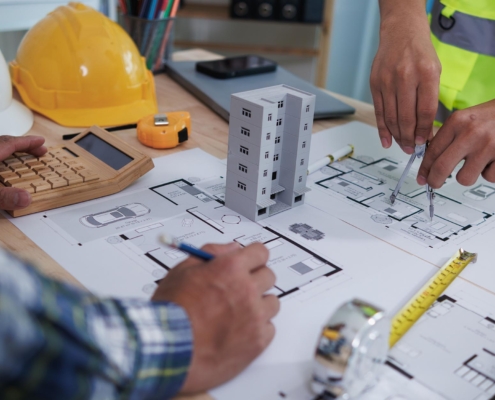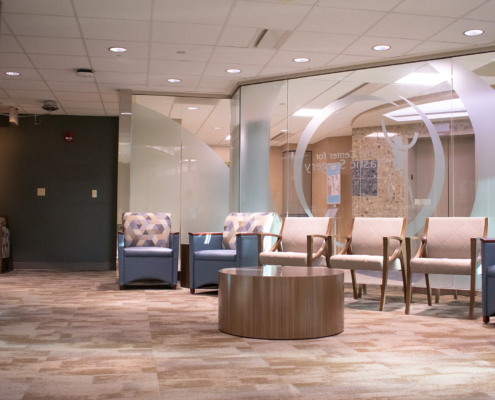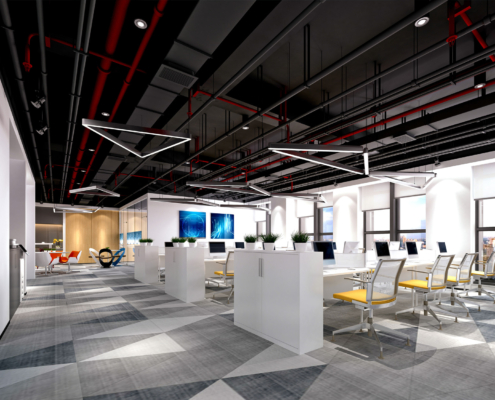 https://www.tdp-arch.com/wp-content/uploads/2025/03/Roots-Church-interior.jpg
1250
2000
Abstrakt Marketing
/wp-content/uploads/2024/09/Torgerson-Design-Partners-Logo.png
Abstrakt Marketing2025-03-28 09:07:212025-04-24 11:55:45Church Renovation Ideas to Enhance Worship Spaces
https://www.tdp-arch.com/wp-content/uploads/2025/03/Roots-Church-interior.jpg
1250
2000
Abstrakt Marketing
/wp-content/uploads/2024/09/Torgerson-Design-Partners-Logo.png
Abstrakt Marketing2025-03-28 09:07:212025-04-24 11:55:45Church Renovation Ideas to Enhance Worship SpacesOvercoming Challenges in Commercial Building Architecture
Commercial building architecture stands at the intersection of aesthetic brilliance and functional design. However, several challenges threaten the realization of an architectural vision.
From integrating sustainable practices to abiding by stringent regulatory standards, architects must navigate through a complex maze of constraints. Keep reading and discover how renowned firms are setting new benchmarks for success in the face of adversity.
Understanding the Common Challenges Faced by Architecture Firms
Embarking on a commercial architecture project includes an array of challenges. Firms must precisely navigate these hurdles to deliver functional, aesthetically pleasing, and law-abiding structures.
Compliance with Ordinances and City Laws
One of the first challenges is adhering to the strict ordinances and city laws that regulate commercial building architecture. These regulations ensure the safety, accessibility, and environmental sustainability of buildings, but they can be complex and multifaceted. Non-compliance can lead to costly delays, fines, or even project cancellation.
For instance, zoning laws might restrict certain types of construction in specific areas, while building codes mandate particular structural requirements. The solution lies in thorough research and early engagement with local authorities. Employing compliance experts and legal advisors can help firms navigate these laws efficiently, ensuring that all design and construction phases meet the required standards.
Budget Constraints
Financial limitations are a reality for many projects. Budget constraints can restrict the scope of design and materials, needing innovative solutions to stay within the financial boundaries. This often requires balancing quality with cost, which can be particularly challenging when aiming for high standards in both.
Adopting a transparent budgeting process and maintaining clear communication with clients about financial limitations can help manage expectations and ensure the project remains financially viable.
Complex Design Challenges
Creating designs that are both functional and visually compelling is no simple feat. Complex design challenges often require unique and sophisticated problem-solving skills. This includes integrating modern technology, sustainable practices, and innovative design elements that meet client needs and regulatory standards.
One approach to addressing this is the use of advanced design software that allows for virtual modeling and simulations, helping architects visualize and test their concepts before actual construction begins. Collaborative brainstorming sessions and engaging multi-disciplinary teams can also bring diverse perspectives and solutions to the table, fostering creativity and innovation in design.
Lack of Expertise of the Firm
Some architectural firms may encounter projects that are outside their usual scope, exposing a lack of expertise. This can affect the quality and efficiency of the project’s outcome. To mitigate this, firms can invest in continuous professional development and training for their staff, ensuring they stay updated with the latest industry trends and technologies. Partnering with specialized consultants or subcontractors can also provide the necessary expertise for specific aspects of the project. Building a network of reliable external experts allows firms to handle diverse projects with confidence and competence.
Project Management Issues
Effective management is critical when taking on a commercial building architecture project. Firms often grapple with project management issues such as deadline pressures, coordination among various stakeholders, and logistical hurdles. Poor project management can lead to delays, cost overruns, and compromised quality.
Implementing robust project management software can help streamline scheduling, resource allocation, and communication among team members. Establishing clear roles and responsibilities, regular progress meetings, and setting realistic timelines are essential practices. Fostering a collaborative team environment where everyone is aligned with the project goals can significantly enhance overall project management efficiency.
Access to Materials
Finding the right materials at the right price points is yet another challenge. Firms need to secure access to materials that are both suitable for the project and compliant with regulatory standards. This requires a thorough understanding of material properties, sourcing options, and supply chain dynamics. Building strong relationships with reliable suppliers and staying informed about market trends can help firms secure materials in a timely and cost-effective manner.
Additionally, exploring alternative materials and sustainable options can address availability issues and enhance the project’s environmental impact. Advanced planning and procurement strategies are crucial to avoid delays and ensure the continuous availability of necessary materials.
Choosing the right architectural firm is the first big step to achieving your design goals. There are some considerations to keep in mind before you sign the dotted line.
Architectural Project Management: Steering the Construction Project
Commercial building architecture is not only about creating a design that embodies the client’s vision and meets the community’s needs; it is also about the meticulous management of the construction process. Effective project management is crucial for a commercial construction project’s timely and budget-conscious delivery. Navigating through complex projects requires a deep understanding of the specific challenges and the employment of specialized strategies to overcome them.
Effective Project Management Strategies Specific to Commercial Architecture
Developing effective project management strategies is essential to ensure that every phase of the construction aligns with the proposed design and client expectations. Utilizing advanced software tools for project scheduling, budget tracking, and resource allocation can aid in creating a transparent and efficient workflow. Regular team meetings and updated reporting systems also play a fundamental role in keeping all stakeholders informed and engaged throughout the construction process.
Overcoming Management Challenges in Commercial Building Architecture
Common challenges such as unexpected site conditions, material procurement issues, and regulatory compliance requirements often arise during commercial construction projects. Skilled project managers must anticipate these issues and implement contingency plans. By fostering strong communication among architects, engineers, contractors, and clients, potential obstacles can be addressed proactively to prevent delays and cost overruns.
Tools and Methodologies for Maintaining Project Timelines and Budgets
Adherence to project timelines and budgets is vital for the economic viability of a commercial building project. Employing modern project management methodologies like Agile and Lean construction principles can maximize efficiency and responsiveness to change. Digital tools such as Building Information Modeling (BIM) assist in visualizing and enhancing collaboration and decision-making, ensuring that the project stays on course toward successful completion.
Cost Management and Budgeting in Construction
Building a commercial structure is much more than an architectural endeavor—it’s a significant financial investment. Striking the right balance between architectural ambition and financial realities is vital to ensuring the success and sustainability of a new building.
Strategies for Effective Cost Management and Budgeting in Commercial Projects
Navigating the financial aspects of construction requires a robust strategy. Key to this process is forecast accuracy, wherein project leaders use historical data and industry standards to predict costs accurately. Another strategy is value engineering, which involves examining the project elements to ensure maximum functionality at the lowest possible cost. Additionally, employing a phased approach to tendering—breaking the project down into manageable chunks—can lead to more competitive bidding and cost savings.
The Impact of Planning and Pre-Construction Decisions on Overall Project Costs
The decisions made during the planning and pre-construction phases have a profound impact on the overall costs of a commercial building project. From site analysis to choosing the right construction methodologies, careful consideration at these initial stages can lead to significant cost savings. Engaging in detailed cost estimation, clear specification writing, and thorough contract preparation helps mitigate risks associated with unanticipated expenses that can arise later in the project.
Tackle Your Next Commercial Building Architecture and Construction Project With The Help of TDP
Torgerson Design Partners specializes in bold, modern, and quality commercial building architecture designs. Our firm is backed by over a decade of successful commercial designs for structures, including offices, retail spaces, and restaurants. Contact us today for a free consultation and bring your visions to life.









